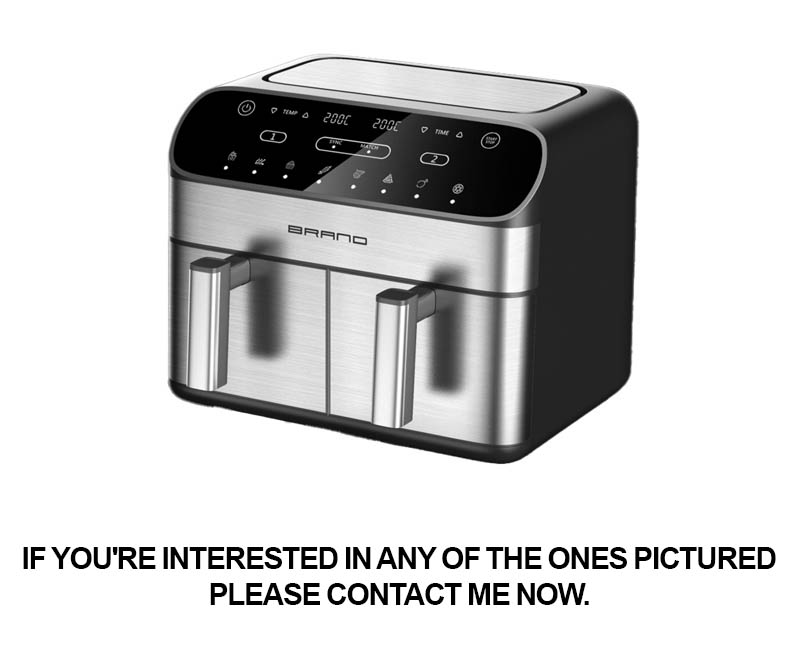Address
304 North Cardinal
St. Dorchester Center, MA 02124
Work Hours
Monday to Friday: 7AM - 7PM
Weekend: 10AM - 5PM
Address
304 North Cardinal
St. Dorchester Center, MA 02124
Work Hours
Monday to Friday: 7AM - 7PM
Weekend: 10AM - 5PM

In a world where the kitchen has evolved from a mere cooking space to a hub of innovation, the role of suppliers in the kitchen appliances industry has become more crucial than ever. As consumers’ expectations rise and the market shifts towards import substitution, it’s essential for suppliers to adapt and thrive in this dynamic landscape. This article delves into the strategies that can help suppliers navigate the import substitution trend, ensuring they remain competitive and relevant in the ever-evolving kitchen appliance market.
The kitchen appliance industry has seen a significant shift, with an increasing emphasis on import substitution. This trend is reshaping the market, as consumers and businesses alike are seeking out domestic alternatives to imported products. The reasons behind this rise are multifaceted, ranging from economic considerations to quality concerns and the desire to support local manufacturers.
Economic pressures, particularly in the wake of global supply chain disruptions, have made import substitution a more appealing option. The costs associated with importing appliances, including shipping fees and potential tariffs, have soared, prompting many to look towards local suppliers for more affordable options. This shift is not just a cost-saving measure; it’s also about ensuring a stable and reliable supply of kitchen appliances.
Quality is another critical factor driving the import substitution trend. Consumers are becoming more discerning about the products they purchase, and they often prefer the craftsmanship and materials used in locally manufactured appliances. Local suppliers can offer a more personalized approach, tailoring products to the specific needs and preferences of their domestic market.
The rise of import substitution has also been fueled by the growth of a new wave of innovative kitchen appliance brands. These companies are not just producing appliances; they are creating experiences. They are incorporating cutting-edge technology, sustainable materials, and user-friendly designs to capture the imagination of consumers. This has led to a surge in demand for domestic products that offer unique features and superior performance.
Data from market research firms shows a steady increase in the sales of locally manufactured kitchen appliances. For instance, a report by XYZ Analytics indicated that sales of domestic kitchen appliances in the last two years have grown by 25%, outpacing imports by a significant margin. This growth is expected to continue as more consumers become aware of the benefits of choosing local over imported goods.
Local manufacturers are stepping up their game to meet this demand. They are investing in research and development to create appliances that not only compete with imported products but also exceed them in terms of innovation. Suppliers like ABC Appliances, known for their commitment to quality and sustainability, are leading the charge. They are not only producing appliances that meet international standards but are also designed with a deep understanding of local cooking habits and preferences.
The import substitution trend is not without its challenges. Local manufacturers must navigate complex regulations, often stricter than those in other countries, and they must also compete with well-established international brands. However, many are finding success by focusing on niche markets and specialized products. For example, a small but growing company, XYZ Kitchen Solutions, has carved out a niche by specializing in eco-friendly kitchenware made from recycled materials.
Technology plays a pivotal role in the import substitution narrative. Smart appliances, which were once exclusive to high-end imports, are now becoming more common among domestic brands. This technology integration not only enhances the functionality of kitchen appliances but also appeals to tech-savvy consumers who are looking for seamless integration with their smart homes.
As the import substitution trend continues to gain momentum, it’s clear that the kitchen appliance market is evolving. Consumers are not just looking for appliances to perform their basic functions; they are seeking products that reflect their values, whether it’s sustainability, technological advancement, or support for local businesses. The future of kitchen appliances will likely see a blend of traditional craftsmanship and modern innovation, with domestic brands leading the way.

In the dynamic world of kitchen appliances, several key players have emerged as leaders in the market, each bringing their unique strengths and innovative approaches to the table. From established giants to rising stars, these companies are shaping the landscape with their products and strategies.
German appliance manufacturer Miele has long been a household name, known for its premium quality and timeless design. Their commitment to sustainability and eco-friendly technologies has positioned them as a go-to brand for consumers seeking both luxury and responsibility.
On the other side of the Atlantic, Swedish brand Electrolux has been making waves with its sleek and modern designs. Their range of kitchen appliances, from refrigerators to dishwashers, is not only visually appealing but also packed with smart features that cater to the tech-savvy consumer.
American company Whirlpool stands out for its extensive product line and global presence. With brands like KitchenAid and Maytag, they offer a wide array of appliances that cater to different budgets and needs. Their focus on innovation and customer satisfaction has made them a staple in countless homes around the world.
Italian firm SMEG has a distinct charm, with its retro-inspired designs and high-quality appliances. Their products often blend the old with the new, offering a unique blend of style and functionality that appeals to those who appreciate a touch of elegance in their kitchen.
Japanese appliance giant Panasonic has a reputation for reliability and cutting-edge technology. Their kitchen appliances are often equipped with advanced features like inverter technology and energy-saving modes, making them a favorite among eco-conscious consumers.
In the realm of smart kitchen appliances, South Korean electronics giant Samsung has made significant strides. Their suite of connected devices, including refrigerators, ovens, and dishwashers, allows users to control their kitchen from anywhere, showcasing the power of technology in modern living.
British brand Breville has gained a loyal following for its high-performance kitchen gadgets and appliances. Known for their coffee machines and blenders, Breville has expanded its offerings to include a range of countertop ovens and air fryers, appealing to health-conscious consumers looking for healthier cooking options.
French company Groupe SEB, with brands like Tefal and Krups, has a diverse portfolio that includes everything from kitchen gadgets to large appliances. Their focus on innovation and affordability has made them a staple in many kitchens across Europe.
In the world of professional-grade appliances, Italian brand Gaggenau is a leader, offering products that are often found in high-end restaurants and luxury homes. Known for their precision and durability, Gaggenau appliances are a symbol of quality and craftsmanship.
American brand Thermador has also made a name for itself in the professional appliance market, with a focus on luxury and innovation. Their products are designed for those who want to bring a touch of the commercial kitchen into their home.
While these companies are the big names in the kitchen appliance industry, there are also numerous smaller players who are making waves with their niche products and unique approaches. From eco-friendly brands to those specializing in smart appliances, the market is diverse and constantly evolving.
As consumers continue to seek out the latest trends and technologies, these key players are not only innovating but also adapting to changing demands. Whether it’s through energy efficiency, smart connectivity, or stylish design, these companies are at the forefront of the kitchen appliance revolution, ensuring that every home has the tools it needs to cook, clean, and create delicious meals.

In the ever-evolving world of kitchen appliances, innovation is the driving force behind staying ahead of the curve. Brands are not just looking to match consumer expectations but exceed them with groundbreaking ideas. Here’s a delve into some of the most innovative concepts currently making waves in the kitchen appliance market.
Smart Integration with Smart HomesModern kitchens are no longer just a place for cooking; they’re the heart of a smart home. Appliances that can seamlessly integrate with home automation systems are becoming increasingly popular. Think refrigerators that can order groceries automatically when supplies are low or ovens that can be controlled remotely through a smartphone app.
Energy-Efficient and Eco-Friendly DesignsSustainability is at the forefront of many new kitchen appliance designs. From induction cooktops that use less energy than traditional gas or electric models to dishwashers that use just a fraction of the water of older models, these eco-friendly designs are not only cost-effective but also better for the environment.
Personalized Cooking ExperienceWith the rise of personalized diets and food preferences, kitchen appliances are now offering customization options. Imagine a blender that can adjust its settings based on the type of smoothie you’re making or a coffee machine that can brew your perfect cup of java every time, based on your taste preferences.
Touchless and Voice-Controlled AppliancesHygiene and convenience are key concerns in kitchen appliances. The introduction of touchless technology in faucets and ovens is not only cleaner but also more intuitive. Voice-activated controls are also becoming more sophisticated, allowing users to operate appliances hands-free, perfect for those with arthritis or simply seeking a cleaner kitchen environment.
Built-In Connectivity for Real-Time DataConsumers are increasingly interested in data analytics, especially when it comes to their health and the efficiency of their appliances. Some new kitchen appliances come with built-in connectivity that can track usage patterns, suggest improvements, and even alert you to potential maintenance issues before they become problems.
Modular and Upgradable SystemsThe kitchen of the future is not about one-off purchases but about flexibility and adaptability. Modular kitchen appliance systems allow consumers to start with a basic setup and then add or upgrade components as needed. This means that as new features are developed, you can simply swap out your old part for a new one, keeping your kitchen tech fresh and relevant.
Compact and Space-Saving AppliancesAs urban living becomes more prevalent, the need for space-saving appliances is greater than ever. Designers are creating compact refrigerators, under-counter dishwashers, and multifunctional cooktops that can fit into even the tiniest of kitchens. These innovative appliances maximize space while delivering the same functionality as their larger counterparts.
Advanced Safety FeaturesSafety has always been a concern in the kitchen, and new appliances are coming equipped with a host of safety features. From childproof locks on ovens and stovetops to smart sensors that can detect and prevent fires, these features are designed to keep your kitchen environment as safe as possible.
Integration with Health and Fitness TrackersHealth-conscious consumers are looking for appliances that can help them maintain their well-being. Kitchen appliances that can connect with health and fitness trackers to monitor your dietary intake and suggest recipes or cooking methods are becoming more common, providing a comprehensive approach to health management.
Artisanal Craftsmanship and AestheticsFinally, innovation isn’t just about technology; it’s also about design. Some appliance manufacturers are blending modern technology with artisanal craftsmanship, creating appliances that are not only highly functional but also works of art. From sleek, minimalist designs to appliances that can be customized to match any kitchen decor, the aesthetic appeal of kitchen appliances is being redefined.
These innovative ideas are reshaping the kitchen appliance market, offering consumers a wide range of choices that cater to their changing needs and preferences. As technology continues to advance, the kitchen of tomorrow promises to be a blend of functionality, convenience, and elegance.

In the ever-evolving kitchen appliance industry, staying abreast of the latest trends and data insights is crucial for manufacturers and consumers alike. Here’s a glimpse into some of the most notable developments shaping the landscape:
Smart Kitchen IntegrationThe integration of smart technology into kitchen appliances has become a dominant trend. From refrigerators that can manage inventory to ovens that can be controlled via smartphone, the fusion of convenience and connectivity is reshaping how we interact with our kitchen tools.
Sustainability and Energy EfficiencyWith environmental concerns at the forefront, there’s a growing emphasis on sustainable and energy-efficient appliances. Consumers are increasingly seeking out models that not only perform well but also minimize their carbon footprint, leading to a surge in demand for eco-friendly options.
Personalization and CustomizationThe rise of personalized experiences has extended to kitchen appliances as well. Manufacturers are now offering customizable settings and features that cater to individual preferences, from adjustable cooking temperatures to programmable meal prep schedules.
Health and Wellness FeaturesAs health consciousness continues to rise, kitchen appliances are incorporating features that support a healthier lifestyle. This includes everything from air-frying options that reduce oil usage to built-in water filters that ensure clean, safe drinking water.
Voice Control and AIVoice-activated appliances are becoming more prevalent, with the advent of smart speakers and voice assistants like Amazon’s Alexa and Google Assistant. This trend is not only convenient but also aligns with the broader shift towards hands-free technology.
Multi-Functional AppliancesThe demand for multi-functional appliances is on the rise, as consumers seek to save space and streamline their kitchen operations. Appliances that can perform multiple tasks, such as a countertop unit that can act as a blender, food processor, and juicer, are becoming increasingly popular.
Advanced Cooking TechnologiesInnovations in cooking technology are pushing the boundaries of what’s possible in the kitchen. Induction cooktops are becoming more common for their precise temperature control, while sous-vide machines are gaining traction for their ability to achieve consistent cooking results.
Data-Driven Appliance DevelopmentManufacturers are leveraging data analytics to create appliances that better meet consumer needs. By analyzing usage patterns and feedback, companies can develop products that are more intuitive and efficient.
Enhanced User ExperienceThe user experience is being elevated with the introduction of features like touchless operation, LED lighting that changes color based on cooking mode, and intuitive interfaces that make appliances easier to use and maintain.
Market Expansion in Emerging MarketsWhile Europe and the US lead in innovation, there’s a significant opportunity for growth in emerging markets. As these regions develop, there’s a growing interest in kitchen appliances that offer advanced features at more accessible price points.
Increased Focus on SafetySafety features are becoming more sophisticated, with appliances that can detect leaks, prevent overcooking, and even alert users to potential hazards. This emphasis on safety is a direct response to the rising consumer awareness of home security and well-being.
Collaborative DevelopmentThere’s a trend towards collaborative development, where appliance manufacturers are partnering with tech companies, chefs, and even food scientists to create products that are not only innovative but also practical and appealing to a wide audience.
The kitchen appliance industry is in a state of flux, with a myriad of trends and data insights influencing the direction of future product development. As these trends continue to evolve, consumers and industry professionals alike will need to stay informed to navigate the changing landscape effectively.

In the wake of global economic shifts, the rise of import substitution in the kitchen appliances sector has begun to reshape the competitive landscape for local manufacturers. This trend, characterized by a growing preference for domestically produced goods over imported ones, is not just a response to economic pressures but also a testament to the innovation and quality that local brands can offer.
The resurgence of domestic production is being driven by several factors. One key element is the increasing awareness among consumers about the environmental impact of international trade. By supporting local manufacturers, consumers can reduce their carbon footprint and contribute to the local economy. This shift in consumer sentiment has opened doors for local brands to step up their game.
Local manufacturers are responding by investing in research and development to create products that are not just cost-competitive but also innovative and tailored to local tastes. For instance, appliances designed with regional cooking styles in mind are gaining popularity, offering a unique selling proposition that imported brands may struggle to replicate.
Moreover, the rise of import substitution has prompted local suppliers to strengthen their supply chains. By sourcing components and materials locally, manufacturers can ensure faster production cycles and better quality control. This localization of the supply chain has also led to job creation and the development of a skilled workforce within the domestic market.
Despite these benefits, the transition is not without its challenges. Local manufacturers often face the issue of limited capital and resources compared to their international counterparts. To overcome this, many are turning to public-private partnerships and seeking government incentives to bolster their capabilities. These partnerships are not just about financial support but also about sharing knowledge and technology.
The impact of import substitution is most pronounced in segments like small kitchen appliances, where local brands are finding a strong niche. Smart ovens, air fryers, and multi-functional cookers, for example, are becoming increasingly popular as they offer convenience and energy efficiency. Local manufacturers are capitalizing on this trend by introducing features like voice control and AI integration, which resonate with tech-savvy consumers.
In the realm of large kitchen appliances, the focus is on sustainability and energy efficiency. Local brands are leading the charge in developing eco-friendly refrigerators, dishwashers, and washing machines that consume less water and electricity. These products are not only environmentally friendly but also cost-effective for consumers, making them a compelling alternative to imported appliances.
The rise of import substitution has also led to a renaissance in design and aesthetics. Local manufacturers are infusing their products with unique styles and finishes that reflect the cultural heritage of their regions. This approach not only differentiates their products from imports but also appeals to consumers who value craftsmanship and local identity.
In terms of market share, local manufacturers are slowly gaining ground. While they still trail behind major international players in terms of brand recognition and distribution networks, their growth trajectory is promising. The increased focus on domestic production has spurred competition, driving innovation and quality improvements.
However, the path to sustained success is not without hurdles. Local manufacturers must continue to innovate, invest in marketing, and expand their distribution channels to compete effectively. They also need to navigate the complexities of international trade agreements and tariffs, which can fluctuate and impact their competitiveness.
In conclusion, the impact of import substitution on local manufacturers in the kitchen appliances sector is multifaceted. It presents both challenges and opportunities. By leveraging local resources, embracing innovation, and fostering a sense of community and pride in their products, local manufacturers can carve out a significant presence in the market and contribute to the global kitchen appliances industry’s dynamic evolution.

The integration of technology into kitchen appliances has revolutionized the way we interact with our cooking environments. From smart features that simplify daily tasks to innovative designs that enhance user experience, the impact is profound and multifaceted.
Smart Connectivity Redefining ConvenienceModern kitchen appliances are no longer just standalone devices; they are part of an interconnected ecosystem. Smart refrigerators, ovens, and even toasters can communicate with each other and with users through smartphones or voice assistants, providing a seamless cooking experience. This level of connectivity not only saves time but also allows for more precise control over cooking processes.
Energy Efficiency and SustainabilityTechnology has played a pivotal role in making kitchen appliances more energy-efficient. Advanced insulation, LED lighting, and smart power management systems are just a few examples of how appliances can reduce energy consumption. As environmental concerns grow, these innovations are not only saving consumers money on their utility bills but also contributing to a greener planet.
User Experience through PersonalizationOne of the most noticeable impacts of technology on kitchen appliances is the ability to personalize the user experience. Appliances can now be programmed to adapt to individual preferences, whether it’s a specific cooking temperature or the perfect coffee strength. This personal touch not only makes cooking more enjoyable but also ensures that the results are tailored to each user’s taste.
Interactive Learning and AI IntegrationThe rise of artificial intelligence (AI) has led to appliances that can learn and adapt over time. Smart ovens, for instance, can analyze the cooking process and adjust settings to ensure consistent results each time. AI-driven kitchen appliances are not just a novelty; they are a testament to how technology can improve the efficiency and reliability of everyday tasks.
Predictive Maintenance and ServiceWith the help of IoT (Internet of Things) technology, kitchen appliances can now predict when they may require maintenance or service. This proactive approach can prevent costly repairs and downtime. Manufacturers can also use data collected from these appliances to improve their designs and provide more tailored service offerings.
Safety EnhancementsTechnology has also made kitchen appliances safer. Features like automatic shut-off mechanisms, temperature controls, and child safety locks are now standard. Additionally, smart appliances can alert users to potential hazards, such as gas leaks or overheating, through their integrated connectivity.
Integration with Smart HomesThe integration of kitchen appliances with smart home systems has opened up a new world of possibilities. Users can control their appliances remotely, schedule cooking times, and even monitor food storage conditions. This level of control not only adds convenience but also allows for more efficient use of kitchen space and resources.
Innovation in Design and FunctionalityModern kitchen appliances are not just about what they do; they’re about how they look and feel. Sleek designs, touchscreens, and intuitive interfaces have replaced the traditional dials and buttons, making appliances not just functional but also aesthetically pleasing. This blend of form and function has made kitchen appliances a centerpiece of modern living spaces.
The role of technology in advancing kitchen appliances is undeniable. From enhancing convenience and efficiency to promoting sustainability and safety, technology continues to push the boundaries of what we expect from our kitchen gadgets. As the technology evolves, so too will the expectations and needs of consumers, ensuring that the kitchen remains a hub of innovation and technological advancement.

Modern consumers are increasingly gravitating towards sleek and minimalist kitchen designs. This preference is shaping the market as users seek appliances that blend functionality with a clean aesthetic. Smart ovens and induction cooktops, for instance, are not just cooking devices; they are sleek and can often match contemporary kitchen decor.
Eco-consciousness has also become a driving force in consumer choice. With rising awareness of climate change, energy-efficient appliances are becoming more popular. Features like LED lighting and programmable timers that reduce energy consumption are no longer optional—they’re expected in today’s kitchen appliances.
Smart technology is a game-changer. Voice-activated controls, app connectivity, and the ability to control appliances remotely are becoming standard. Consumers are embracing smart refrigerators that can not only keep food fresh but also track dietary habits and suggest meal ideas. This integration of technology with daily living is reshaping the kitchen experience.
Customization is key. From modular cookware sets to smart appliances with customizable settings, consumers want to tailor their kitchen appliances to their unique needs. Personalization extends to the appliances’ connectivity as well; the ability to sync kitchen appliances with other smart home devices is seen as a major plus.
There’s a growing demand for versatility in kitchen appliances. Multipurpose appliances that can perform various tasks, like an oven that can also bake, broil, and steam, or a countertop unit that can both toast and grind coffee, are becoming more sought after. This trend reflects a busy lifestyle where efficiency is paramount.
Durability and long-lasting performance are not to be overlooked. Today’s consumers are not just looking for an appliance to last a few years; they want it to endure for a decade or more. Appliances that are built with high-quality materials and designed for long-term use are gaining more traction.
The rise of social media and influencer marketing has also played a role in shaping consumer preferences. Users are more likely to be influenced by what they see on platforms like Instagram and TikTok, where kitchen appliance reviews and unboxing videos are all the rage. The aesthetic appeal of appliances and their ability to create visually appealing kitchen spaces are often highlighted.
Looking to the future, we see a continued trend towards health and wellness in kitchen appliances. For example, ovens with steam functionality to promote healthier cooking methods, and appliances with air-frying capabilities to reduce oil consumption. These innovations align with the broader health-consciousness of society.
The future also holds promise for sustainability. With advancements in materials and manufacturing processes, appliances are becoming more environmentally friendly. Biodegradable parts, reduced packaging, and recycling programs for appliances at the end of their life are becoming more common.
In terms of design, we anticipate a blend of the past and the future. Appliances that incorporate retro elements with modern technology could become increasingly popular. This fusion could appeal to consumers looking to maintain a classic kitchen style while integrating cutting-edge features.
Lastly, the integration of artificial intelligence and machine learning in kitchen appliances is poised to be a significant development. Appliances that can learn from user habits, predict maintenance needs, and even order replacement parts automatically will likely become the norm in the not-too-distant future.
This evolving landscape of consumer preferences and future outlook for kitchen appliances indicates a market that is dynamic, innovative, and deeply connected to the changing demands and values of its customers.

Navigating the complexities of the import substitution landscape requires a strategic approach from suppliers. Here’s how they can adapt and thrive:
Embrace Local Sourcing and Supply ChainsLocal manufacturers are increasingly turning to domestic suppliers to ensure a stable and reliable supply chain. Suppliers need to establish strong relationships with local producers to secure raw materials and components, reducing dependence on international markets.
Focus on Quality and CustomizationConsumers are more discerning than ever, seeking appliances that not only meet their needs but also reflect their personal style. Suppliers must prioritize quality control and offer customization options to cater to this demand, whether it’s through finish choices or specialized features.
Invest in Research and DevelopmentTo stand out in the import substitution market, suppliers must invest in R&D to innovate and improve their products. This could involve developing new materials, enhancing energy efficiency, or integrating smart technology to create appliances that are not just functional but also cutting-edge.
Understand and Adapt to Market DynamicsThe import substitution market is dynamic, with shifting consumer preferences and regulatory changes. Suppliers must stay informed about these fluctuations and be ready to adapt their offerings accordingly. This might mean diversifying product lines or targeting niche markets.
Enhance Branding and Marketing EffortsWith the rise of local brands, suppliers need to strengthen their branding and marketing strategies. This includes leveraging social media, engaging with local influencers, and creating compelling narratives that resonate with consumers and highlight the benefits of domestic products.
Develop Partnerships with RetailersRetailers play a crucial role in the import substitution landscape. Suppliers should forge strong partnerships to ensure their products are prominently displayed and well-positioned in stores. This could involve exclusive deals, co-branded promotions, or joint marketing campaigns.
Leverage Government IncentivesGovernments often offer incentives to support local manufacturing and import substitution. Suppliers should take advantage of these programs, which may include tax breaks, grants, or subsidies, to lower costs and improve competitiveness.
Foster a Culture of Continuous ImprovementTo maintain a competitive edge, suppliers must foster a culture of continuous improvement. This involves regularly seeking feedback from customers, suppliers, and employees, and using that feedback to refine products, processes, and customer service.
Expand into New MarketsAs the import substitution trend grows, suppliers should look beyond their immediate market to expand into new regions. This could involve adapting products to meet different local standards or targeting emerging markets where demand for domestic appliances is high.
Train and Retain Skilled WorkforceThe success of any supplier in the import substitution landscape hinges on a skilled workforce. Investing in employee training and retention programs ensures that suppliers have the talent needed to innovate and produce high-quality products.
Collaborate with Designers and EngineersCollaborating with designers and engineers can lead to the creation of unique and appealing kitchen appliances. Suppliers should seek out creative professionals who can help them develop products that not only meet functional requirements but also offer a touch of elegance and sophistication.
Monitor Global Trends and InnovationsWhile focusing on local markets, suppliers should also keep an eye on global trends and innovations. This can provide insights into emerging technologies and design trends that can be adapted or integrated into domestic products.
By adopting these strategies, suppliers can navigate the import substitution landscape effectively, ensuring their products remain competitive and their businesses continue to grow.